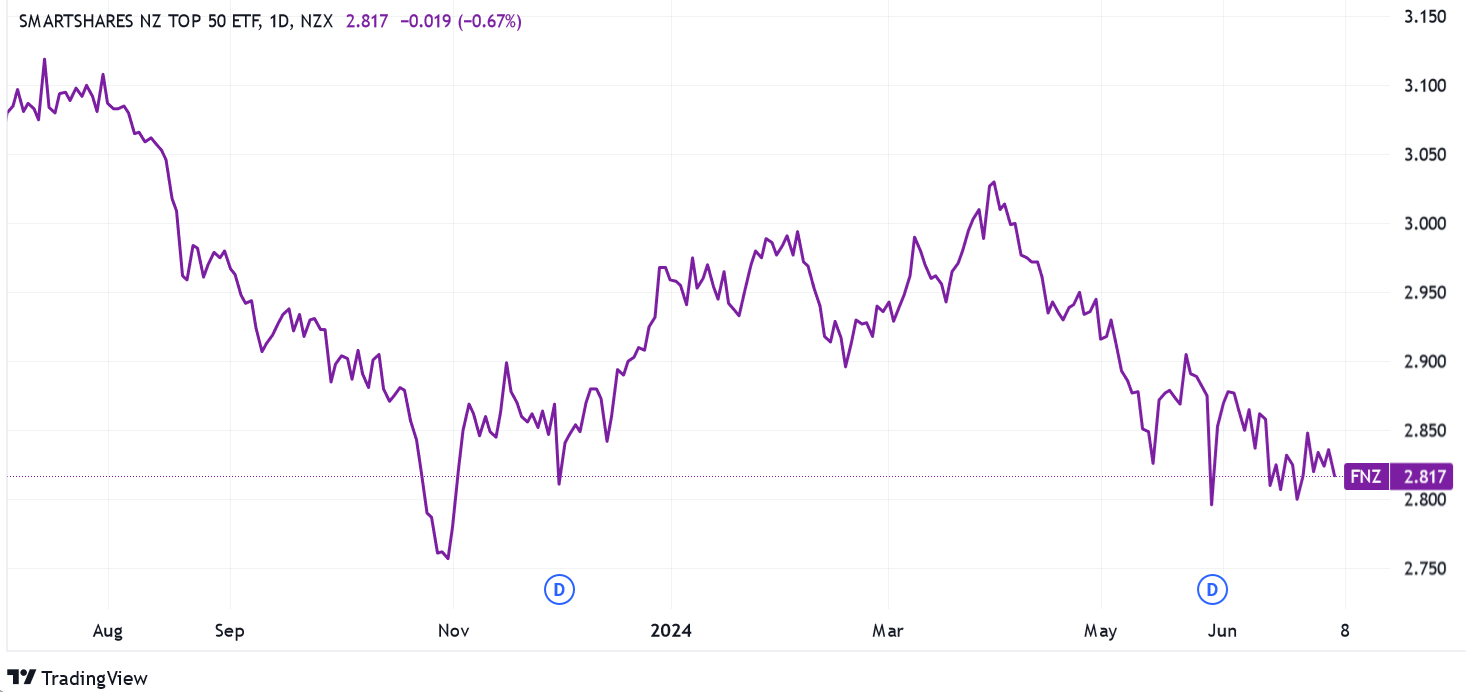Day Trading in New Zealand



Day trading in New Zealand is rapidly growing in popularity. Whether you’re looking to trade shares on the New Zealand Stock Exchange (NZX) or deal in currency pairs containing the New Zealand dollar (NZD), there are ample opportunities to try and book a profit.
This guide will tell you all you need to know about day trading in the territory, from discussing the regulatory and tax environment to walking through a short-term trade on a New Zealand security.
Quick Introduction
- Day trading in New Zealand is regulated by the Financial Markets Authority (FMA). This is a ‘green-tier’ regulator under our Regulation & Trust Rating, meaning that traders can expect robust protections from bad actors.
- New Zealand’s economy – the 15th largest in the Asia Pacific – has struggled. Weak tourism revenues, high inflation, and elevated interest rates mean it has plunged into recession multiple times in recent years, presenting short-term trading opportunities.
- Trading profits are typically subject to income tax of between 10.5% and 39%, and should be notified to the Inland Revenue Department (IRD).
Top 4 Brokers in New Zealand
These 4 trading platforms came out on top for day traders in New Zealand following our latest tests:
All Day Trading Platforms in New Zealand
What Is Day Trading?
Day trading in New Zealand involves the buying and selling of financial assets in the same trading day. These could include stocks (such as Westpac Banking Corporation), forex trading in New Zealand (like the NZD/USD cross), cryptocurrencies, commodities and derivatives.
New Zealand’s largest-listed companies can be found on the NZX’s Main Board, also known as the NZSX. These include ANZ Group, Fisher & Paykel Healthcare, Meridian Energy, and Auckland International Airport.
As well as facilitating share trading, the NZX also provides a marketplace for debt securities like bonds, and equity derivatives such as futures and options. Traders can also trade dairy derivatives on the exchange, which reflects the country’s highly agricultural economy.
In 2023, share trading volumes at the NZX remained weak due to the tough macroeconomic environment. Total trading value dropped 9.7% year on year to its lowest level for nine years.
Is Day Trading Legal In New Zealand?
Yes. All financial market activity, including day trading, is regulated by the FMA, which was set up in 2011 to establish trading rules, ensure they are followed, and carry out enforcement action if necessary.
In its own words, the FMA says that its statutory duty “is to promote and facilitate the development of fair, efficient, and transparent financial markets; and to promote the confident and informed participation of businesses, investors, and consumers in the financial markets.”
Brokers must be registered with the FMA to set up in New Zealand. Helpfully, the organization keeps a list of unregistered companies – alongside warnings and alerts – on its website to help active traders steer clear of fraudulent parties.
I recommend using the regulator’s licensed providers search facility to check that the broker you choose is authorized to do business in the territory.
How Is Day Trading Taxed In New Zealand?
Day traders must declare any profits they make to the Inland Revenue Department (IRD), the government body tasked with administering New Zealand’s tax system.
Earnings are subject to income tax, the rate of which is progressive depending on a trader’s income levels and their tax bracket. These range from 10.5% for those earning $14,000 or less, to 39% for individuals making $180,000 and above.
How To Start Day Trading
Day traders need to carry out the following steps to speculate on New Zealand’s financial markets:
- Select a day trading broker in New Zealand. Ensuring that the company you choose is FMA-regulated is the first thing to do, but it’s not the only important step to take. Other things to consider include dealing fees, the range of tradable instruments available, the quality of the trading platform, and the amount of leverage on offer (if you wish to borrow funds from your broker).
- Open an account. This may only take a few minutes. However, it requires traders to provide a range of documentation so that brokers can meet Know Your Customer (KYC) and anti-money laundering regulations. Required paperwork includes proof of identification (like a passport or driver’s licence) and proof of address (such as a utility bill).
- Make a deposit. Provided that your account is approved, the final step is to deposit funds in your account. Traders typically make a card transaction or bank transfer to put cash in their trading kitty.
A Trade In Action
Now let’s look at how day trading might look in practice. In this example, my plan is to capitalize on potential stock market movements in the territory following the release of GDP figures.
The Background
Having carried out some detailed research – such as analyzing recent economic data and studying economist reports – I conclude that New Zealand’s economy had grown faster than most traders expected in the last quarter.
The market has priced in GDP expansion of 0.2%, but I believe it may have risen closer to 0.4%. Such a scenario would be positive for market confidence, and may prompt an increase in the value of riskier assets like stocks.
To profit from this scenario, I decide to buy an exchange-traded fund (ETF) that tracks the broader direction of shares on the NZX. My fund of choice is the Smartshares NZ Top 50 ETF, an instrument that normally invests in 50 of the country’s top listed companies.

Before placing my trade, I also conduct technical analysis to better guide me as to where the ETF could be heading, as well as clues as to the scale of any potential market movements. I can use a variety of chart patterns, indicators and trends, using past price and volume data, to tell me what might happen next.
The Trade
Having completed this step, I’m ready to place my trade. The time is 10:40 am NZST, and Statistics New Zealand – the country’s official data agency – is due to release those GDP numbers in exactly five minutes.
My plan is twofold: to place a ‘take profit’ order at 2.832, above the ETF’s current value of 2.818, and a ‘stop loss’ instruction at 2.811. Both tools allow me to manage risk by closing my trade if the ETF rises or falls to either of those levels (whichever comes first). These processes thus allow me to either book a profit or limit my losses.
Having placed these instructions, I sit back and wait for the numbers to come out. It’s good news: the New Zealand economy is shown to have risen 0.3% in the last quarter.
The rate of growth isn’t as high as I’d expected. However, it’s still enough to boost investors’ risk appetite, and therefore lead to a broad rise in share prices. After half an hour, the Smartshares NZ Top 50 ETF has risen through my ‘take profit’ level of 2.832, giving me a profit of 14 pips.
Bottom Line
Tight regulation and excellent technical infrastructure make New Zealand a great place for day traders to do business. But as with any region, investors need to be vigilant and be wary of scammers. Choosing a regulated, top-rated broker in New Zealand is essential.
Day trading is by nature a risky endeavour, regardless of the presence of fraudsters. So only deal with money you can afford to lose.
Recommended Reading
Article Sources
- New Zealand Stock Exchange (NZX)
- Inland Revenue Department (IRD)
- Main Board (NZSX) - NZX
- Unregistered Businesses - FMA
- Warnings And Alerts - FMA
- Licensed And Reporting Entities - FMA
- About Us - FMA
- Statistics New Zealand
The writing and editorial team at DayTrading.com use credible sources to support their work. These include government agencies, white papers, research institutes, and engagement with industry professionals. Content is written free from bias and is fact-checked where appropriate. Learn more about why you can trust DayTrading.com



